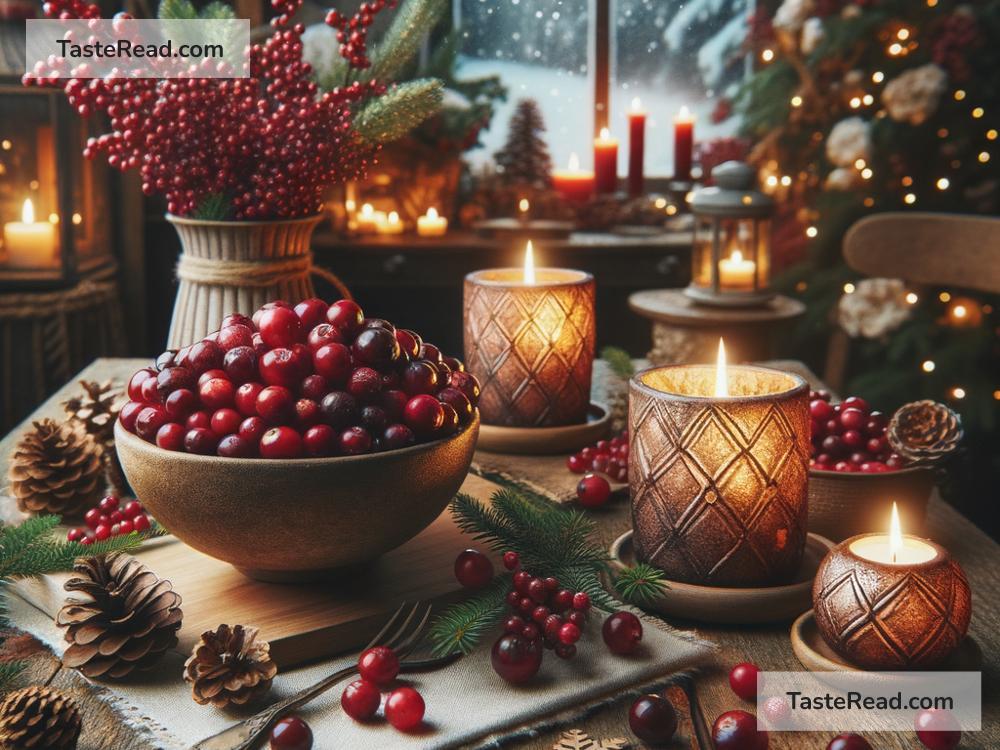Why Cranberries Are Used in Holiday Traditions
The holiday season is a magical time filled with joy, family gatherings, and delicious food. One special food that often makes an appearance during holiday meals is the humble cranberry. Whether it’s cranberry sauce on the Thanksgiving table, cranberry juice to toast with, or cranberry garlands hanging on the Christmas tree, these small, shiny red berries are a staple of holiday traditions. But have you ever wondered why cranberries are so closely tied to holidays? Let’s explore the story behind cranberries and how they became a holiday favorite.
1. A North American Native
Cranberries are native to North America, making them one of the few fruits truly tied to the land where many holiday traditions began. Indigenous peoples, like the Native Americans, were the first to use cranberries. They ate the berries fresh, dried them for storage, and even used them in dishes like pemmican—a mix of dried meat, fat, and crushed cranberries. Cranberries also held cultural significance, as their deep red color was associated with health, vitality, and even sacred rituals.
When Europeans settled in North America, they learned about cranberries from the Indigenous peoples. These berries soon became popular among the settlers, who used them in sauces, preserves, and baked goods. Since cranberries were widely available, easy to store, and packed with nutrients, they became an essential food.
2. Cranberries at the First Thanksgiving
One reason cranberries are tied to holiday traditions is likely due to their role in Thanksgiving. While we don’t know exactly what was on the table during the first Thanksgiving in 1621, historians believe cranberries may have been served. Native Americans introduced the pilgrims to cranberries, showing them how to use the berries to sweeten and flavor dishes. Cranberries could also be made into a simple sauce by boiling them with water and sweeteners like honey or maple syrup.
This association with Thanksgiving stuck over the years, and cranberry sauce became a must-have item during holiday feasts. Today, many families can’t imagine a Thanksgiving meal without the sweet and tangy taste of cranberry sauce served alongside turkey, stuffing, and mashed potatoes.
3. A Touch of Festive Color
One of the reasons cranberries are so beloved during the holidays is their vibrant red color. Red is often associated with Christmas and other winter holidays because it represents warmth, joy, and festivity. Cranberries add a splash of color to holiday dishes, centerpieces, and decorations, helping to brighten up the table during the cold winter months.
Many families also use cranberries for decorating during Christmas. Cranberry garlands, made by stringing the berries onto thread or twine, are commonly hung on Christmas trees or mantels. These decorations hark back to older traditions when fruits and other natural items were used to adorn homes. The glossy red berries look beautiful against the green of holiday wreaths or pine trees, creating a classic seasonal feel.
4. Versatility and Flavor
Cranberries are incredibly versatile, which is another reason they’re so popular during the holidays. While cranberries are very tart and almost too sour to eat fresh, they’re delicious when cooked, dried, or sweetened. Cranberry sauce is one of the most popular holiday dishes, but cranberries also shine in baked goods like muffins, cakes, and breads. Dried cranberries can be tossed into salads, sprinkled over yogurt, or added to trail mix for holiday snacks.
Cranberries pair well with many traditional holiday flavors, such as citrus, cinnamon, and nutmeg. Their tangy taste helps balance the richness of other dishes, making them the perfect complement to meats, cheeses, and sweets. The wide range of ways cranberries can be prepared ensures they have a place at nearly every holiday gathering.
5. A Symbol of Togetherness
If you look closer, cranberries also have strong symbolic meaning for the holidays. Since they were shared between Native Americans and settlers during Thanksgiving and are still a shared tradition worldwide, cranberries remind us of community and togetherness. The holidays are about coming together with loved ones, sharing meals, and creating memories—and cranberries represent these values.
Additionally, cranberries grow in bogs and are harvested in a unique way. When fields are flooded, the berries float to the surface, creating a sea of red. This natural process is a reminder of how cranberries bring groups of people together, from farmers working the harvest to families sharing cranberry-based dishes at the table.
Conclusion
Cranberries are more than just a tasty holiday food—they’re a symbol of history, tradition, and the spirit of the season. From Native American tribes using cranberries for sustenance and rituals to modern families serving cranberry sauce at Thanksgiving, these bright red berries have connected people for centuries. Their vibrant color, versatility in cooking, and cultural significance make them a beloved part of holiday celebrations.
So, the next time you enjoy cranberries during the holidays—whether in a sauce, dessert, or decoration—take a moment to appreciate the rich history and meaning behind this festive fruit. Cranberries remind us to celebrate the season with love, gratitude, and a splash of color!


